Release time :2023-03-13
Source:support@yingchitech.com
Scan:1562
First speaker - Dr. Shan
Live date: May 30, 2021

The first speaker of Brian Hacker, Chunlei Shan, from Shanghai University of Traditional Chinese Medicine, Dean of the School of Rehabilitation Medicine and Director of the Institute of Rehabilitation Medicine, launched the speech sharing on the theme of "Basic theory of non-invasive neuromodulation technology". The following are some excerpts from the live broadcast. (Excerpts from the first-person perspective of the speaker)
Thanks to the live broadcast platform of "Brain Hacker" and the host's introduction. I am very honored to be able to exchange some simple theoretical knowledge about non-invasive neuromodulation technology with you tonight.
My sharing is just an introduction. The follow-up Brain Function Testing and Regulation Special Committee will invite other scholars to give more in-depth and specific explanations on the methods and experiences of non-invasive diagnosis and treatment technology in clinical application.
Today I mainly talk about some basic theoretical knowledge. "Every field has its master". If there is any inappropriate discussion on some physiological and molecular mechanisms, please correct me.
"A journey of a thousand miles begins with a single step", during the teaching process, I will also ask some simple questions, I hope everyone can discuss together, and pay more attention to the basic knowledge of non-invasive neuromodulation.
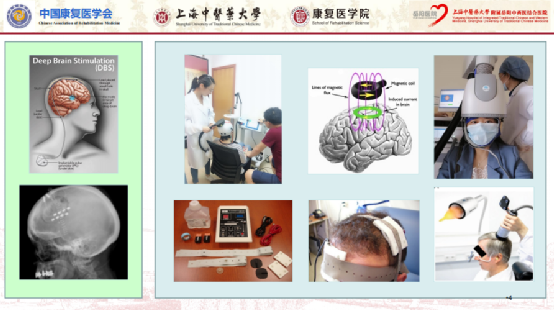
There are many methods of neuroregulatory techniques. Two main types as we know, invasive and non-invasive.
Invasive neuromodulation methods mainly involve surgical treatment. Whether it is deep brain stimulation (DBS) or epidural stimulation, electrodes need to be implanted inside the skull of the brain to improve brain damage through electrical stimulation of predetermined parts.
Non-invasive neuromodulation technology is an "emerging force" developed in recent years. Common ones include transcranial magnetic stimulation, transcranial electrical stimulation (including direct current stimulation, alternating current electrical stimulation), pulsed ultrasonic stimulation, etc.
Today, I mainly take transcranial magnetic stimulation and transcranial electrical stimulation as examples to share with you these two currently popular non-invasive neuromodulation technologies.
First, let's briefly review the development history of transcranial magnetic stimulation and electrical stimulation.
In 1831, Faraday proposed that electromagnetic effects could be generated between two electric coils. In 1896, he found that when two coils connected with batteries were placed on both sides of the human brain, the subjects will experience phosphenes, that is, visually appear flashing effects. It was speculated that the changing magnetic field would generate electric field and further regulate the brain function.

In 1982, Polson first discovered that the use of magnetic technology to stimulate peripheral nerves can generate motor-evoked potentials in the corresponding muscle parts.
In 1985, Barker extended the application field of transcranial magnetic field to the motor cortex of the brain, marking the official birth of transcranial magnetic technology.
Since then, the development of transcranial magnetic technology has advanced by leaps and bounds, and it has become an important clinical tool for the diagnosis and treatment of some mental diseases and neurological diseases.
Transcranial electrical stimulation has a longer history of development. The technology can be traced back to the end of the 18th century. At that time, some people had already used electric eels to diagnose and treat patients with mental and psychological abnormalities.

After the 1960s, transcranial electrical stimulation was formally used as a non-invasive treatment for brain neuromodulation. In the early stage of application, people used animal models to explore whether the functions of memory, attention and alertness of animals were changed after electrical stimulation.
After 1988, due to the relatively large side effects of drugs for many mental and psychological disorders, people's desire for treatments with no or low side effects became more urgent. In this context, the development of brain imaging and other technologies has also increased people's attention to electrotherapy to a certain extent.
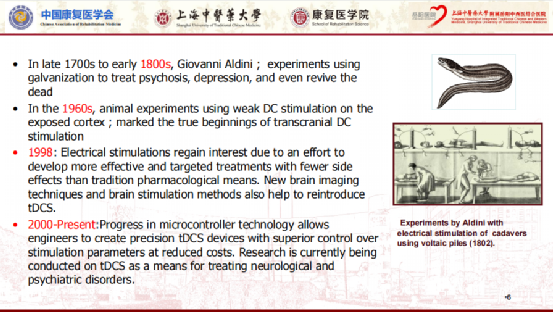
After the 21st century, with the improvement of technology level and the expansion of application scenarios (from mental diseases to neurological diseases), the development of transcranial electrical stimulation technology has also begun to change with each passing day.
Both transcranial magnetic and transcranial electrical stimulation can use magnetic fields or electromagnetics to pass through the skull of the brain, thereby changing the electrophysiology of brain neurons.
Due to the different electrical conductivity of different brain tissues in the brain, the brain electrical signals induced by transcranial magnetic stimulation or electrical stimulation also exhibit different strengths.
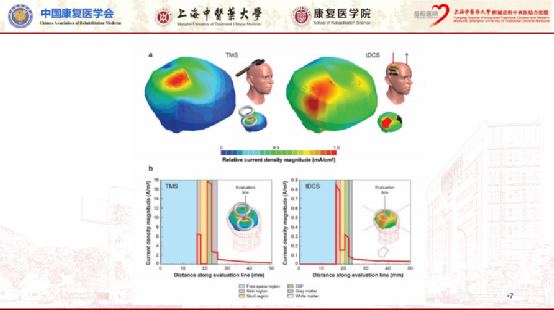
In general, cerebrospinal fluid is rich in Na, K ions and ion channel proteins, etc., and the charged ions make cerebrospinal fluid develop good conductivity. After receiving transcranial magnetic or electrical stimulation, the induced current intensity in this part is the highest. On the other hand, the white matter of the brain, in comparison, has much poorer electrical conductivity.
The internal structure of the brain is intricate, such as gyri, sulci, cerebrospinal fluid, white matter, gray matter, etc., with different structures and different electrical resistances, which also has higher requirements for therapeutic targets and placement angles of stimulus sources during magnetic or electrical stimulation.
Electrical stimulation has lower spatial resolution and less precision than magnetic stimulation. The transients of the electric field of alternating current allow for a higher temporal resolution than direct current stimulation. The advantage of ultrasound stimulation is the high degree of focus.
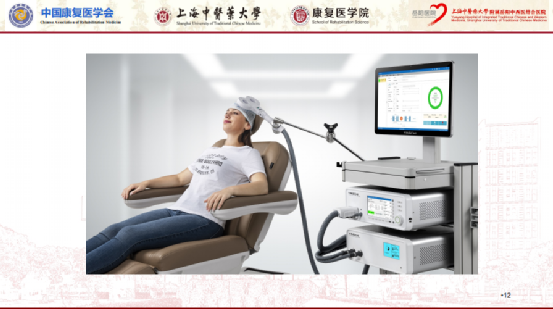
As mentioned above, direct current stimulation began in animal experiments, and was originally used to explore the brain change mechanism of animal alertness or attention.
With the development of technology, direct current stimulation and EEG are gradually combined clinically to achieve higher temporal and spatial resolution.
In the past two decades, the literature reports on electrical stimulation or magnetic stimulation have sprung up, and the development momentum has grown by leaps and bounds. So far, it has been an important tool for clinical non-invasive diagnosis and treatment.
Transcranial magnetic stimulation generally consists of stimulators, stimulation coils, cooling equipment, displays and other components. We also have a certain degree of understanding about the stimulation mechanism.
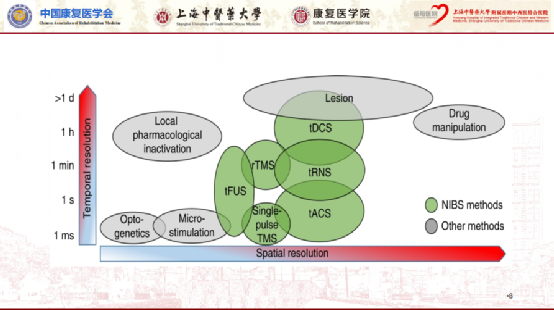
The stimulator is charged when plugged into a power source, forming a huge capacitor with a huge amount of power. By inputting a changing current to the coil, a correspondingly changing magnetic field can be formed around the coil, and the directions of the magnetic field and electric field follow the "right-hand law". The changing magnetic field can penetrate the skull to stimulate the brain nerves, and the stimulated brain nerves will generate induced currents, thereby achieving the effect of regulating neuroplasticity.
The magnetic field of the "figure 8" coil is more focused, and the highest stimulation intensity is located in the center of the coil. The circular coil is characterized by a larger stimulation area, but due to the scattered magnetic field, the stimulation depth is shallower than that of the "figure 8".
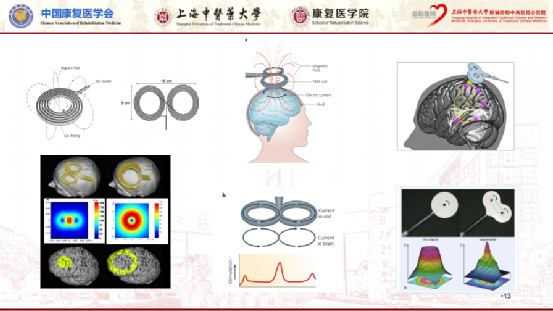
Generally, the stimulation depth of the coil is about 2-3cm, and different stimulation frequencies have different stimulation effects on the brain, most of which follow low-frequency (≤1) inhibition and high-frequency (≥5Hz) excitation.
It has been shown in the literature that there is little difference in the stimulation effect of the stimulation frequency between 1Hz-5Hz.
There is still no unified conclusion on the transfer mechanism of the induced current.
Some people think that the conduction direction of the stimulation signal is transmitted from the cerebral cortex to the spinal cord through the pyramidal tract, then reaches the motor neuron through the exchange cell, and finally reaches the muscle, resulting in muscle contraction.

There are also theories that the brain neuroelectric signals induced by changing magnetic fields are transmitted from interneurons to pyramidal cells, and finally produce muscle contraction. Or the generated induced current can directly act on the pyramidal cells to promote the depolarization of the axon, and then induce the change of the muscle state.
After the brain is regulated, our language, movement, cognition, and emotion may all change to a certain extent. Therefore, when selecting therapeutic targets and stimulation angles, it is necessary to pay special attention to the direction of current induced after stimulation.
Later, I will elaborate on the influence of the induced current direction on the stimulation effect.
Note: The above content is part of the text without changing the original meaning from the speakers. To watch the full live video (in Chinese), please go to Live Broadcast Entrance.